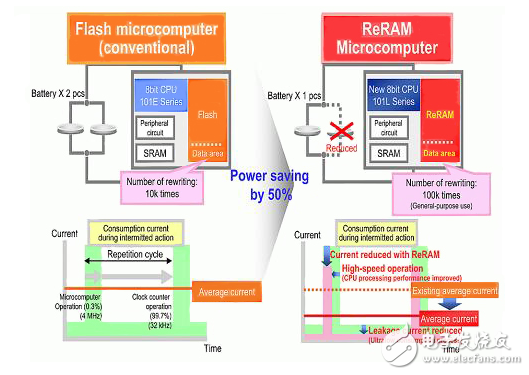
资料下载

MCU与新的和不同的存储单元和存储器结构
MCU与新的和不同的存储单元和存储器结构
记忆技术不停滞不前。存储器结构的变化速度更快和更有效的结构的创建和使用在连续几代人如DRAM SDRAM DDR DDR1、2、3、等。
然而,记忆的进化不仅限于结构的改进。存储单元本身的基本技术已经得到改善。专业的工艺和设计优化低功耗,非易失性存储,安全,或其他特殊需要。
本文着眼于嵌入式MCU的功能,不同类型的存储器单元和存储器结构。一些制造商提供这些MCU和索赔的优点的竞争部分与常规内存和体系结构。本文将研究几种可供设计者选择的方法。

In search of the perfect cell
Van Neumann, Harvard, and RISC architectures all use nonvolatile memory like EPROM and Flash for boot code and firmware. Most boot code is on chip, but ROMless parts also exist and will still use external OTP EPROM or Flash. Both of these technologies provide dense, fairly low-power, low-cost field- and factory-programmable solutions to a microcontroller’s firmware needs.
While legacy EPROM has over decades given way to Flash as the dominant storage technology, the quest has been to eliminate the barrier between volatility and rewriteability. Ultimately, everyone is seeking a single high-speed, nonvolatile, low-power, rewriteable, high-endurance cell that could be used everywhere.
声明:本文内容及配图由入驻作者撰写或者入驻合作网站授权转载。文章观点仅代表作者本人,不代表电子发烧友网立场。文章及其配图仅供工程师学习之用,如有内容侵权或者其他违规问题,请联系本站处理。 举报投诉
- 相关下载
- 相关文章






